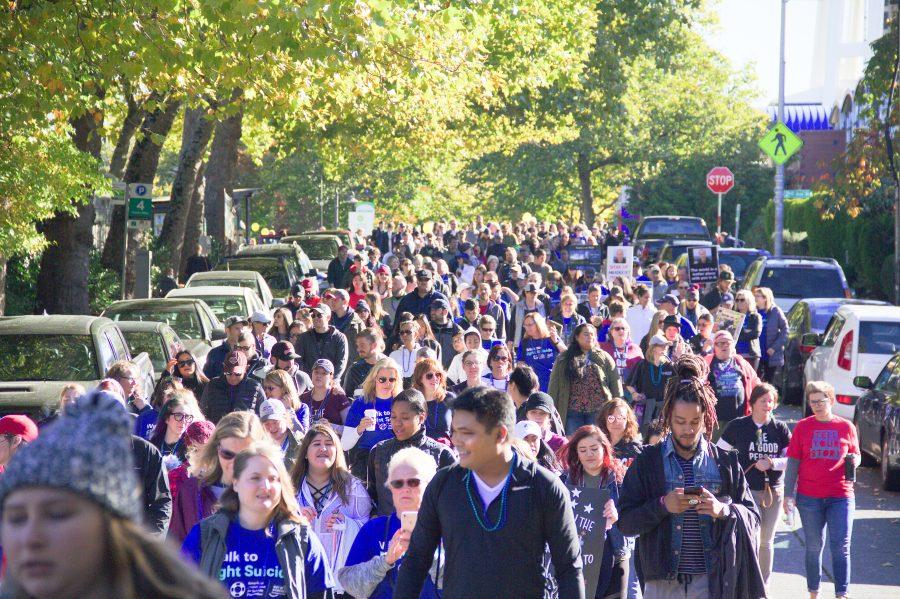American Foundation for Suicide Prevention in Seattle
Amidst the crisp fall air on an October Sunday, hundreds of people from all across Washington and beyond gathered to call attention to one of the nation’s many prevalent issues. Colors of all hues flashed brilliantly about, but one color in particular was predominant over the rest: blue, the color of the American Foundation for Suicide Prevention.
Claire Anderson addressed the crowd as a speaker for this year’s Seattle Out of the Darkness walk, telling her own story.
When Anderson was 21 years old, her father took his own life. “I want people to know that suicide is a real issue,” she said. “Depression and mental illness should not be stigmatized or treated any differently than any other disease or health diagnosis.”
For many, speaking about death and the prevalence of mental illnesses is a disheartening and often too touchy of a subject.
The American Foundation for Suicide Prevention, or AFSP, worked with many donors to host the Seattle Out of the Darkness Walk on Sunday, Oct. 14, creating a safe environment to connect for those who are battling depression or who have lost loved ones to suicide.
AFSP works to create a sense of togetherness among the people affected, directly or indirectly, by this illness. Seattle’s version of the walk is an annual occurrence, but AFSP hosts events in every state with the same goal in mind.
This walk began at Fisher Pavilion and looped around Lower Queen Anne’s streets before ending at the Seattle Center.
Paper hearts were offered to participants to hang messages on clothes lines at the starting point, offering a rainbow of colors with words written on them in memory of those lost to suicide and of hope to those struggling. Balloons, t-shirts, beads and other merchandise in support was also available.
One group of walkers who wore beads ended the walk in front of the pavilion, taking pictures of the yellow balloons being released into the sky. Jennifer Atchinson, Andrea Warner and Tanny Grey were their names. They commuted from Sultan, Marysville and Stanwood respectively to attend the event.
Atchinson’s story was similar to that of Anderson’s; her father and brother had both taken their lives. Many others whose stories aligned with theirs were also part of the walk.
“It’s nice for everybody to come together and see how many people have been affected,” Atchinson said. “It’s unfortunate, but it’s also a support for people who have been struggling with depression, so maybe it can prevent somebody from taking their life.”
Warner and Grey attended with Atchinson for moral support. Warner, who was disappointed in the length and organization of the walk, shared her thoughts on how the perceived shortcomings affected the overall experience.
“As an outsider looking in, and in being here and supportive, I feel like they were cut short of something,” Warner said.
“There’s other people that are driving down the streets that are suffering from the same things, and they don’t know what we’re walking for. … There needs to be more recognition brought to the cause in general.”
The likelihood that witnesses to the walk had dealt with the effects of suicide related issues is high. According to the AFSP’s website, suicide is the eighth leading cause of death in Washington.
Atchinson made the point that many people do not see the prevention of suicide as important as other causes.
AFSP will strive to continue keeping these conversations moving.
As of Sunday night, the Seattle Out of the Darkness’ fundraising goal of $225,000 had been exceeded by roughly $214,000 for a total of $439,000. Donations will continue to be open until Dec. 31, 2018.
Anderson said, “We need to start the conversations now.”















































































